A Tour of the Solar System
Since childhood, everyone is taught the basics of our solar system. There is the Sun, the Earth, our Moon, the other planets (with silly abbreviations such as My Very Educated Mother Just Served Us Noodles), and the hotly debated Pluto. However, over the years, more detailed observations have shown us that there is a vast amount of objects to be studied in the solar system, and the objects we know can be analyzed with new depths. In this assignment, we used optical observing telescopes from Skynet to look at common objects in our Solar System. Our group used the Prompt5 and MDRS-14 telescopes, located in the Northern Hemisphere, to observe the objects. As a result, the objects visible to us were Mars, Jupiter (and its moons), Uranus, Neptune, and C/2022 E3 (ZTF), also known as the Green Comet.
When processing the images, I used planetary centering to align them and stacked them by the color filters (Halpha – red, OIII – green, and U – blue). Mars, Jupiter, and the Green Comet were relatively large and bright targets, so I adjusted their images with manual color balancing. Uranus and Neptune are farther away, so I used photometric color calibration to display their true colors.
Mars
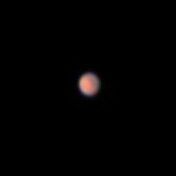
This image of Mars was taken using the Prompt 5 telescope, with the observation from Todd Austell. We used the Halpha, OIII, and U narrowband filters with 10 exposures each of 0.6 seconds long. When processing the images in Afterglow, I used planetary centroid alignment, which means the images were positioned based on the shape of Mars. I then stacked the images for each filter and color mapped them, with Halpha as red, OIII as green, and U as blue. By default, the color settings made Mars appear white. However, this is not the case in real life. As a result, I had to manually adjust the color settings using the Histogram Fitting tool. This allowed me to emphasize some colors, such as the red filter, while reducing others by changing the scale value of each stack. I chose the final image, shown above, based on the realistic representation of Mars’ colors.
While the image is blurry, we can still see some important features on the planet. The image below shows the positioning of Mars from the Stellarium program, which shows detailed views of the sky. As we can see, the white color on the edges of the planet are its ice caps, composed of frozen carbon dioxide. We can also see a dark gray color, caused by dust and rock deposits after crater impacts. Mars’ red color is due to the dust covering the whole planet, composed of oxidized iron.
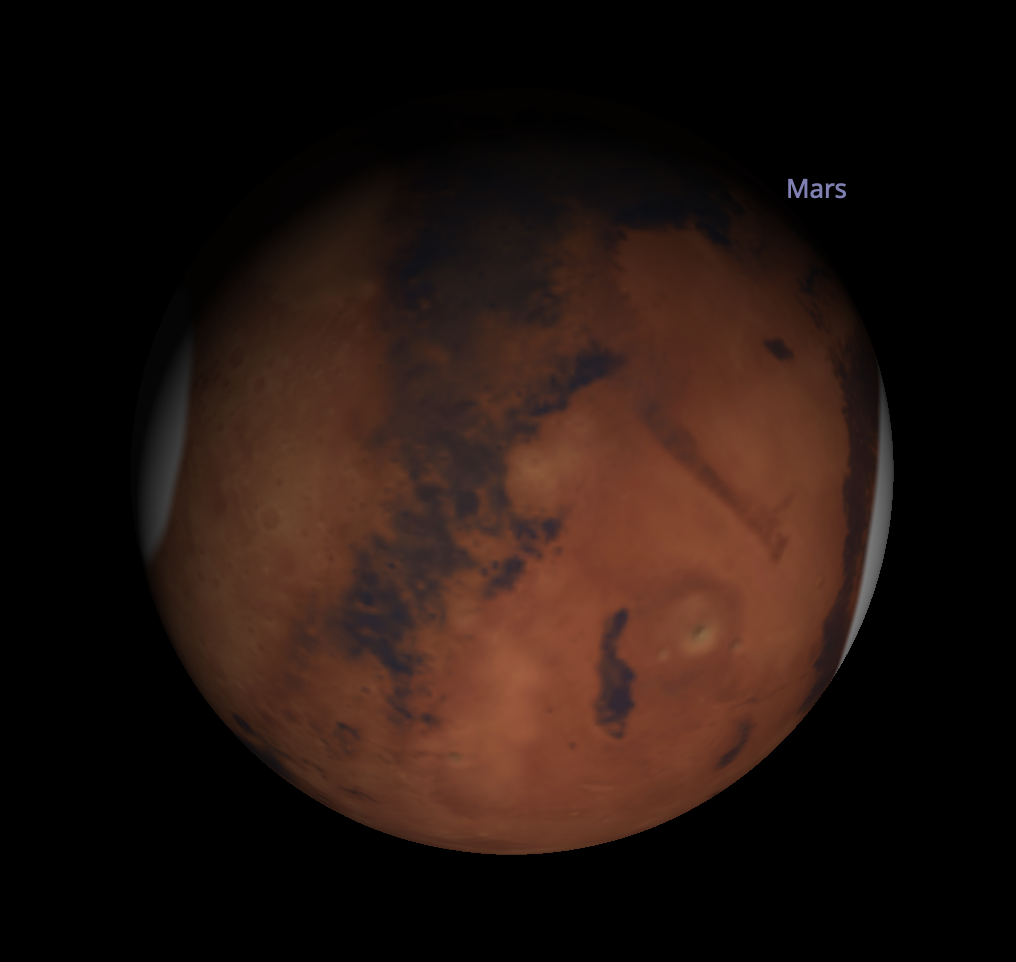
Jupiter
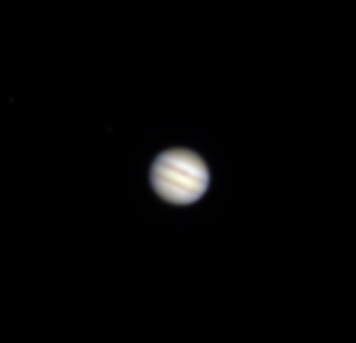
Jupiter is the largest planet in our solar system. I took the image with the Prompt5 telescope (both Jupiter images shown here are from the same telescope image) with the Halpha, OIII, and U narrowband filters. Each filter had 10 exposures, with Halpha and OIII being 1 second and U being 1.5 seconds. In the first image, the midtone values were adjusted to show Jupiter’s colors, while in the second, the values were adjusted to show 3 of the moons.
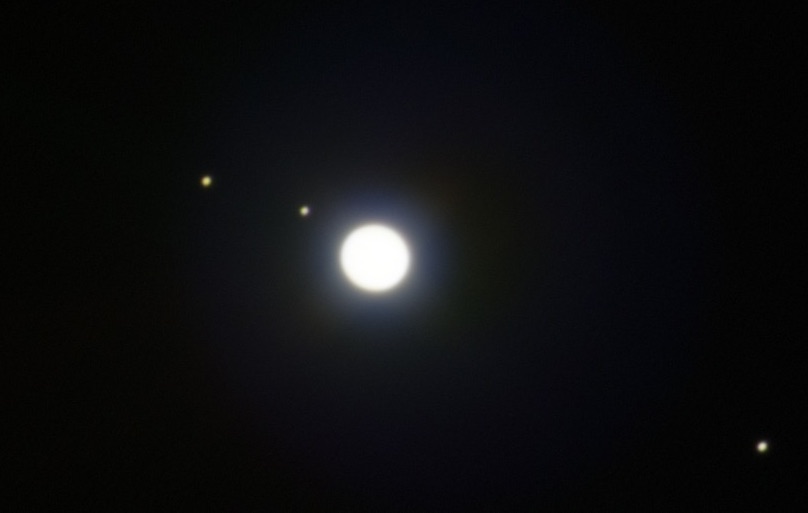
When processing the image, I used planetary centroid alignment and stacked based on the filter. The default color setting for this also shows Jupiter as white, so I manually adjusted the colors for it as well. I first focused on the image of Jupiter by itself, making sure the colors and stripes were visible. Then, for the second image, I adjusted the midtone level while keeping the same color settings.
In the first image, we can see layers of white and red, caused by gas clouds of hydrogen and helium. There are also small amounts of water vapor, ammonium compounds, sulfides, and hydrocarbons in the atmosphere that contribute to varying shades of oranges and yellows. Jupiter is a gaseous planet, so most of what we see are clouds and storms. While we can not see it in this image, Jupiter is also known for its Great Red Spot, which is a giant storm with extremely high pressure and wind speeds.
The second image also shows 3 of Jupiter’s moons. According to the Stellarium image (shown below), we can see that the moons from left to right are Europa, Io, and Ganymede. Europa has a white surface covered in silicate rock and ice, with many searches for water under the surface taking place. Io has a yellow color due to a surface covered in active volcanoes producing sulfur. Ganymede has a slightly darker white surface also covered in silicate rock and ice, as well as craters and dark spots. It also has a magnetic field and is the largest moon in the Solar System.
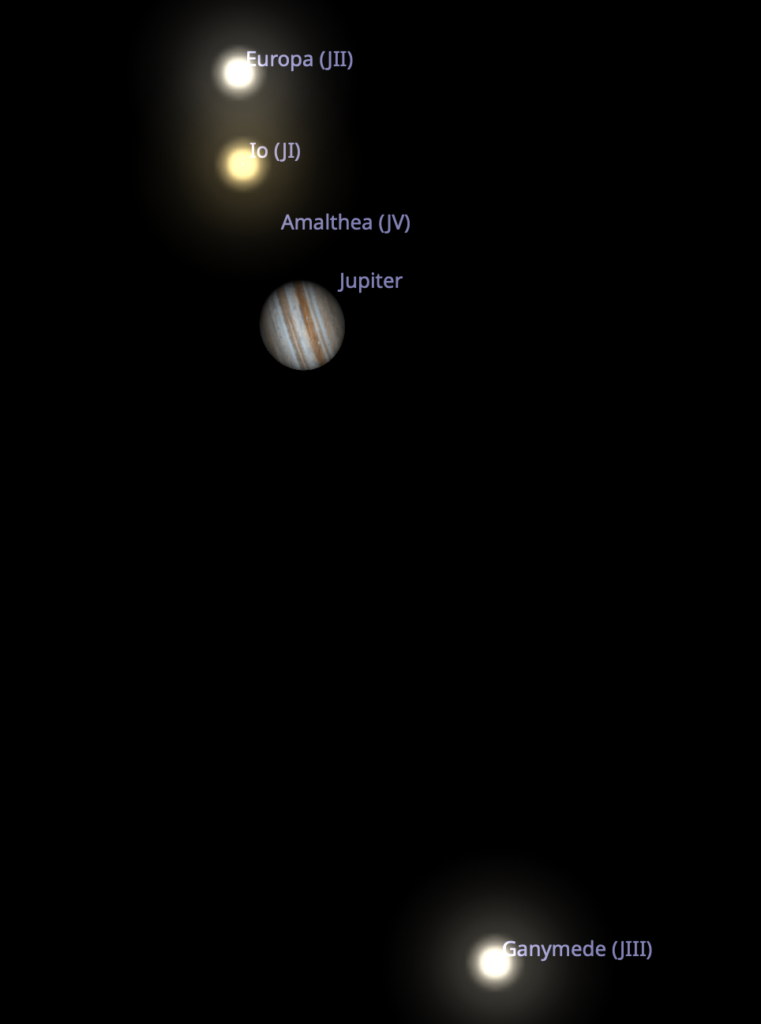
Uranus
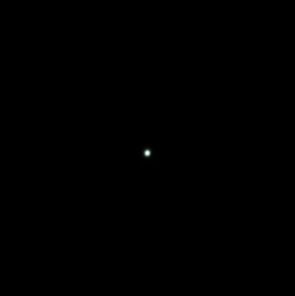
Because Uranus is so far from Earth (about 1.8 billion miles), ground-based telescopes can not capture full details. However, we can use the telescopes to visualize the true color of the planet. The Uranus images were taken by Nat Heddaeus on the Prompt5 telescope with the BVR color filters. Each filter had 30 exposures, with 2.5 seconds for B, 1 second for V, and 1 second for R. After aligning and stacking like the previous planets, Uranus also appeared white by default. However, instead of manually adjusting color, I used photometric color calibration in order to adjust the brightness of the color stacks based on surrounding stars. From this, we can see that Uranus has a blue-green color. Both Uranus and Neptune contain methane in their atmospheres, which absorbs red light and reflect blue light. Uranus has a more greenish/whitish color due to a stronger layer of aerosol haze, which dilutes the blue color from the methane gas.
Neptune
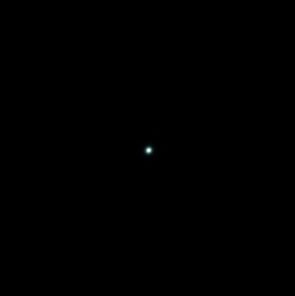
Similar to Uranus, Earth-based telescopes can not capture details of the planet due to a distance of about 2.8 billion miles. The Neptune images were provided by Dr. Reichart from the Prompt5 telescope. Once again, I used photometric color calibration after aligning and stacking. We can see a much stronger blue color from Neptune, due to a large presence of methane in the atmosphere and less aerosol haze than Uranus. In fact, Neptune’s atmosphere is much more active than that of Uranus. This allows for the methane to mix into the aerosol haze layer and condense into clouds. As a result, Neptune has a deep blue color.
Green Comet
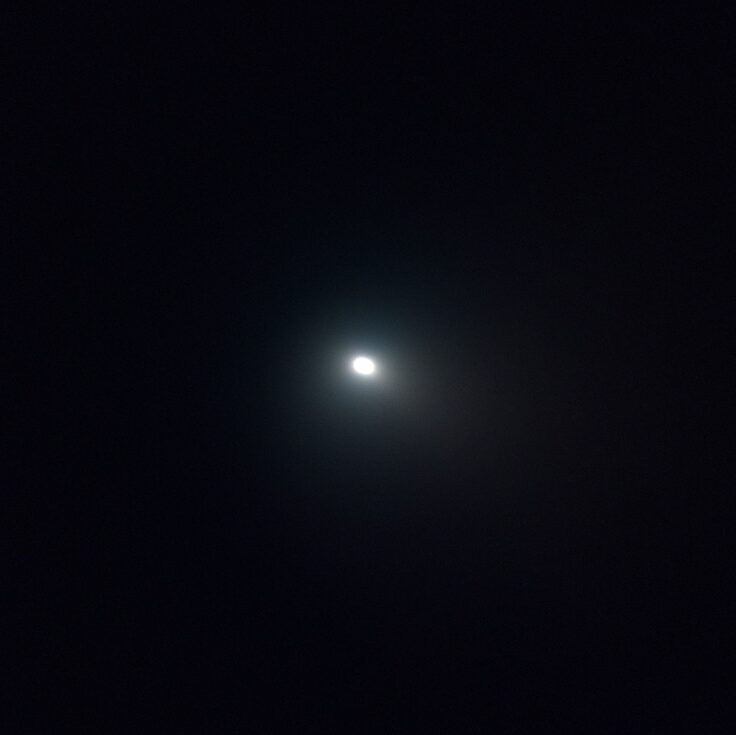
The C/2022 E3 (ZTF) comet, commonly called the Green Comet, was visible to the Northern Hemisphere from late January to early February. This was the first time that it was visible on Earth after 50,000 years. I took the images using the Mars Desert Research Site (MDRS) 14 telescope located in Utah. I used the BVR filters, with 10 exposures each and 20 seconds for B, 15 seconds for V, and 10 seconds for R. I used planetary centroid aligning by focusing the positioning on the center of the comet. When stacking for the filters, I used the chauvenet rejection tool in order to eliminate background streaks from moving stars. I then manually adjusted the color and midtone levels in order to eliminate background distractions and show the green tail. The signature green color is caused by the interaction between light from the sun and dicarbon molecules present around the comet.